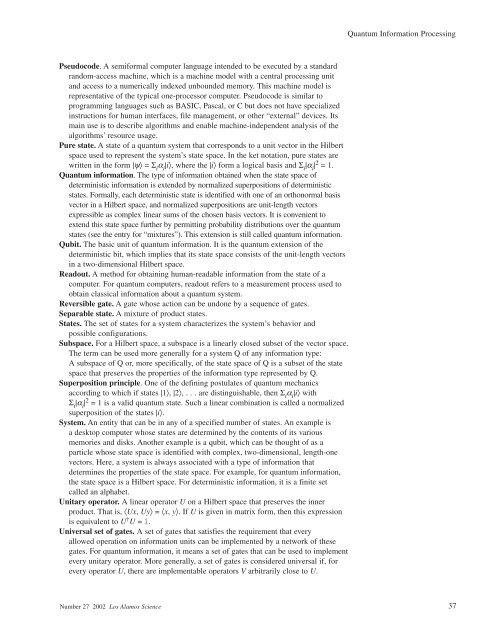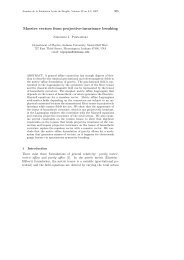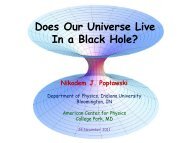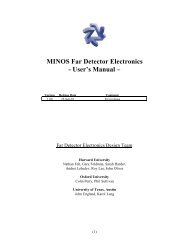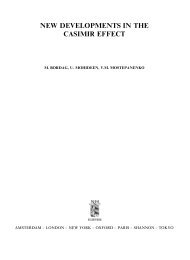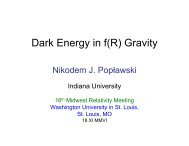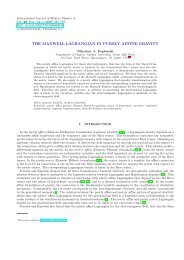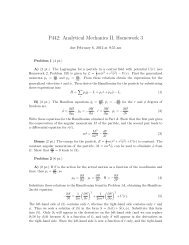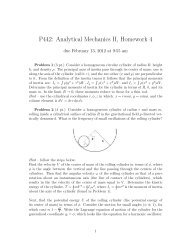Quantum Information Processing
Quantum Information Processing
Quantum Information Processing
You also want an ePaper? Increase the reach of your titles
YUMPU automatically turns print PDFs into web optimized ePapers that Google loves.
Pseudocode. A semiformal computer language intended to be executed by a standard<br />
random-access machine, which is a machine model with a central processing unit<br />
and access to a numerically indexed unbounded memory. This machine model is<br />
representative of the typical one-processor computer. Pseudocode is similar to<br />
programming languages such as BASIC, Pascal, or C but does not have specialized<br />
instructions for human interfaces, file management, or other “external” devices. Its<br />
main use is to describe algorithms and enable machine-independent analysis of the<br />
algorithms’ resource usage.<br />
Pure state. A state of a quantum system that corresponds to a unit vector in the Hilbert<br />
space used to represent the system’s state space. In the ket notation, pure states are<br />
written in the form |ψ〉 = Σ i α i |i〉, where the |i〉 form a logical basis and Σ i |α i | 2 = 1.<br />
<strong>Quantum</strong> information. The type of information obtained when the state space of<br />
deterministic information is extended by normalized superpositions of deterministic<br />
states. Formally, each deterministic state is identified with one of an orthonormal basis<br />
vector in a Hilbert space, and normalized superpositions are unit-length vectors<br />
expressible as complex linear sums of the chosen basis vectors. It is convenient to<br />
extend this state space further by permitting probability distributions over the quantum<br />
states (see the entry for “mixtures”). This extension is still called quantum information.<br />
Qubit. The basic unit of quantum information. It is the quantum extension of the<br />
deterministic bit, which implies that its state space consists of the unit-length vectors<br />
in a two-dimensional Hilbert space.<br />
Readout. A method for obtaining human-readable information from the state of a<br />
computer. For quantum computers, readout refers to a measurement process used to<br />
obtain classical information about a quantum system.<br />
Reversible gate. A gate whose action can be undone by a sequence of gates.<br />
Separable state. A mixture of product states.<br />
States. The set of states for a system characterizes the system’s behavior and<br />
possible configurations.<br />
Subspace. For a Hilbert space, a subspace is a linearly closed subset of the vector space.<br />
The term can be used more generally for a system Q of any information type:<br />
A subspace of Q or, more specifically, of the state space of Q is a subset of the state<br />
space that preserves the properties of the information type represented by Q.<br />
Superposition principle. One of the defining postulates of quantum mechanics<br />
according to which if states |1〉, |2〉, . . . are distinguishable, then Σ i α i |i〉 with<br />
Σ i |α i | 2 = 1 is a valid quantum state. Such a linear combination is called a normalized<br />
superposition of the states |i〉.<br />
System. An entity that can be in any of a specified number of states. An example is<br />
a desktop computer whose states are determined by the contents of its various<br />
memories and disks. Another example is a qubit, which can be thought of as a<br />
particle whose state space is identified with complex, two-dimensional, length-one<br />
vectors. Here, a system is always associated with a type of information that<br />
determines the properties of the state space. For example, for quantum information,<br />
the state space is a Hilbert space. For deterministic information, it is a finite set<br />
called an alphabet.<br />
Unitary operator. A linear operator U on a Hilbert space that preserves the inner<br />
product. That is, 〈Ux, Uy〉 = 〈x, y〉. If U is given in matrix form, then this expression<br />
is equivalent to U † U = 1.<br />
Universal set of gates. A set of gates that satisfies the requirement that every<br />
allowed operation on information units can be implemented by a network of these<br />
gates. For quantum information, it means a set of gates that can be used to implement<br />
every unitary operator. More generally, a set of gates is considered universal if, for<br />
every operator U, there are implementable operators V arbitrarily close to U.<br />
<strong>Quantum</strong> <strong>Information</strong> <strong>Processing</strong><br />
Number 27 2002 Los Alamos Science 37


